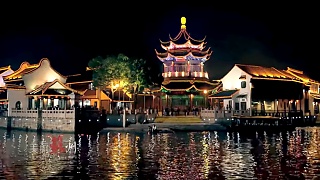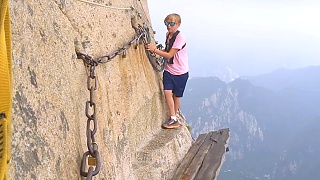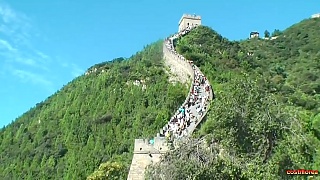
|
YT comment : dominique ridoux :
True story: I once visited a couple of friends in their flat in downtown Shanghai city. When I arrived the whole street was under construction, the road, the side walks, everything... We had lunch, played mahjong, then dinner. When I went out after the evening dinner, the street was completely finished! New asphalt, sidewalks paved and new trees planted all the way. I even went back thinking my friend's building had 2 entrances... The big difference with us in Europe is when a decision is made the do some infrastructure work, they will put as many workers as needed to do it very quickly, they cannot afford to have streets blocked for weeks in a city of 23 million people like Shanghai. In China everything is about efficiency because they have no other choice. Can you afford to queue for tickets and so on in a city of 23 millions? No! Ok, let's all use Wechat and Alipay to increase efficiency... Done in a few years! Almost nobody is using cash anymore in China!
They apply the same mindset to everyday activity, may it be transportation, food industry or even paying your taxes! The result is (as far as I am concerned) a full body check (including check in, CT scan, blood work etc) in less than 2 hours including a complementary breakfast for less than 400 Euros. Or Visa application done in 20 minutes. All car parkings are using plate recognition technology decreasing time wasting again and again.
High speed train are efficient, can move large amounts of people at a fantastic pace. Also as mentioned by many people, they build "hubs", you get out of the train and you have 2 or even 3 subway lines to bring you to your final destination, more and more you even have the airport hub at a walking distance! We have a similar hub in Paris (CDG with RER and TGV within the airport walking distance) but the size of it in Shanghai makes it spectacular!
YT comment : rhn94
China spent 1 Trillion USD over 10-15 years building this network, that is 1/4th the cost of the Iraq War the US paid.
YT comment : Pal Sih
China is building their country.
USA is destroying other countries.
YT comment : thata xx
The best part of China's high speed train is you can order food from any of the restaurants in the station on your phone and designate at what time during which stop to have it delivered to you. During the 2-3 minutes stop, your food is already there waiting to be distributed to you on the train. I miss it so much.
|

 Night walk in ZhuZhou city, HuNan province
Night walk in ZhuZhou city, HuNan province
![[videogallery type=playlist id=PLAhTBeRe8IhNCSe4R-NvrFnrgJvE6jql8] Something different – on the universe / space](https://img.youtube.com/vi/W62aVty77Lw/mqdefault.jpg)






